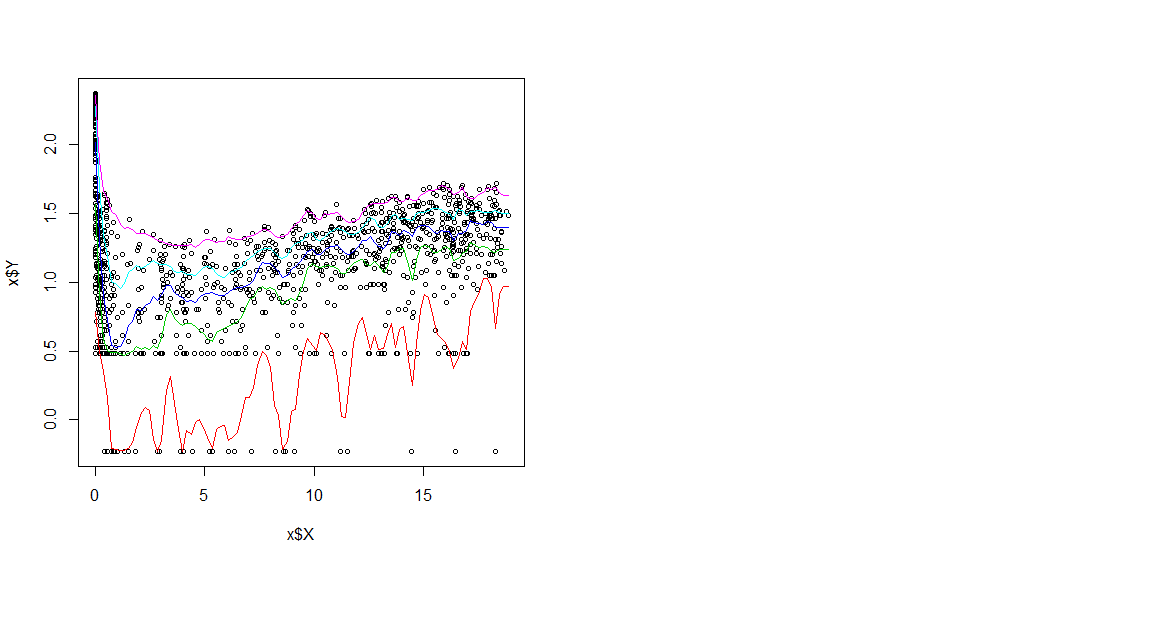"A reference interval is a type of prediction interval and contains the middle 95% of measurements of some substance or item from a healthy population. Age specific reference intervals provide variable interval limits based on age. An Age-Specific Reference Interval gives the boundaries between which a typical measurement on an individual of a certain age from a population of individuals is expected to fall. The reference interval is often presented as percentiles of a healthy reference population, such as the 2.5th percentile and the 97.5th percentile".
I have a dependent variable and variable Age as the independent variable. I want to apply the nonparametirc quantile regression for 0.025 and 0.975 quantiles and I have this shape
.
So I decided to use the power transformation method (calculated lambda=-0.37) for the dependent variable and work with the transformed variable.But I am not sure about the efficiency of this model to calculate the reference curve and the z score and predicted values. Should I remove the observations which are less than 0.5 in the second plot to have more smooth curve? What should I do when the nature of observation between 0 to one year old is completely different from 1 year to 19 years old?
Also this is the plot after using cubic root transformation.



